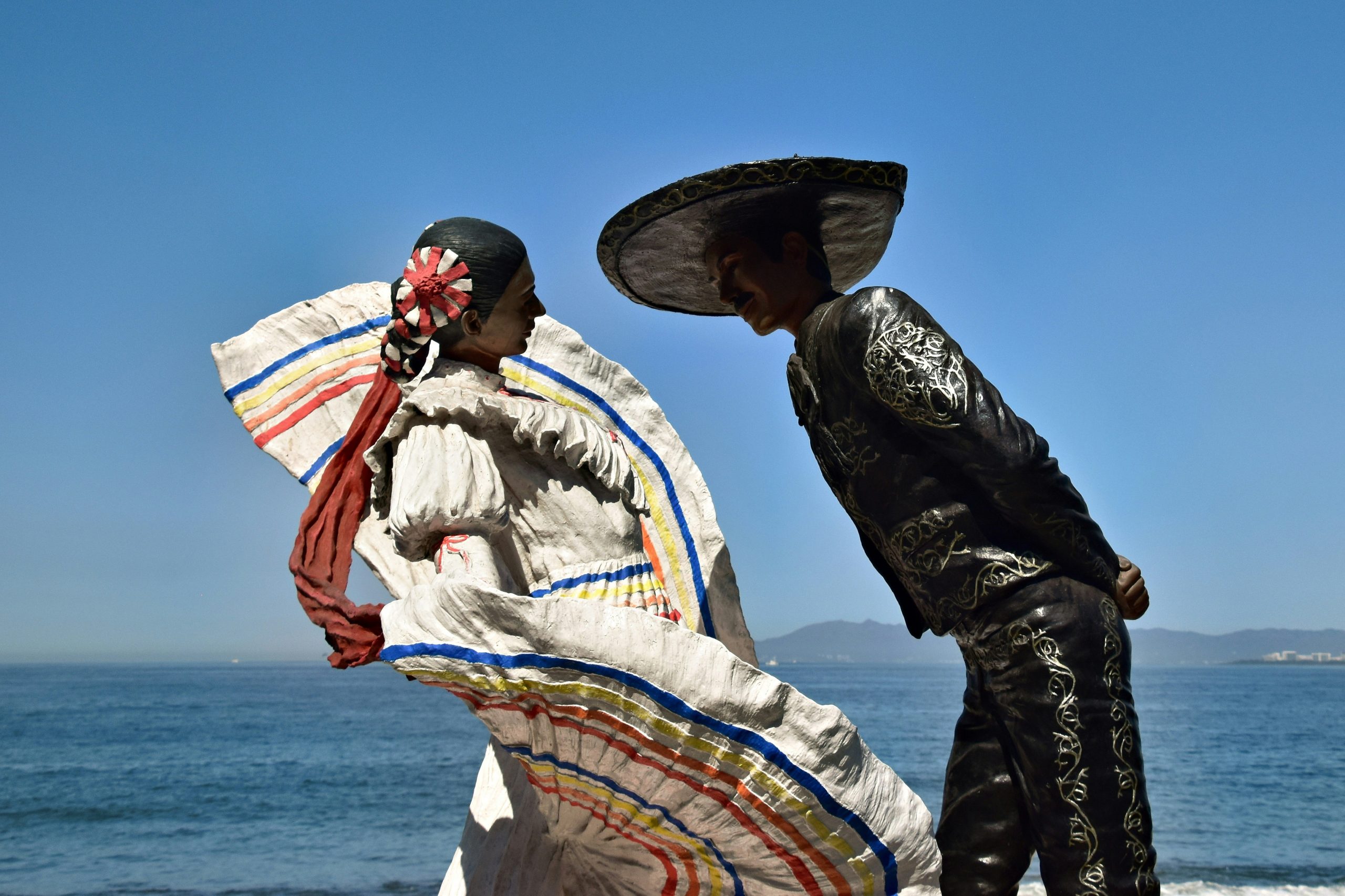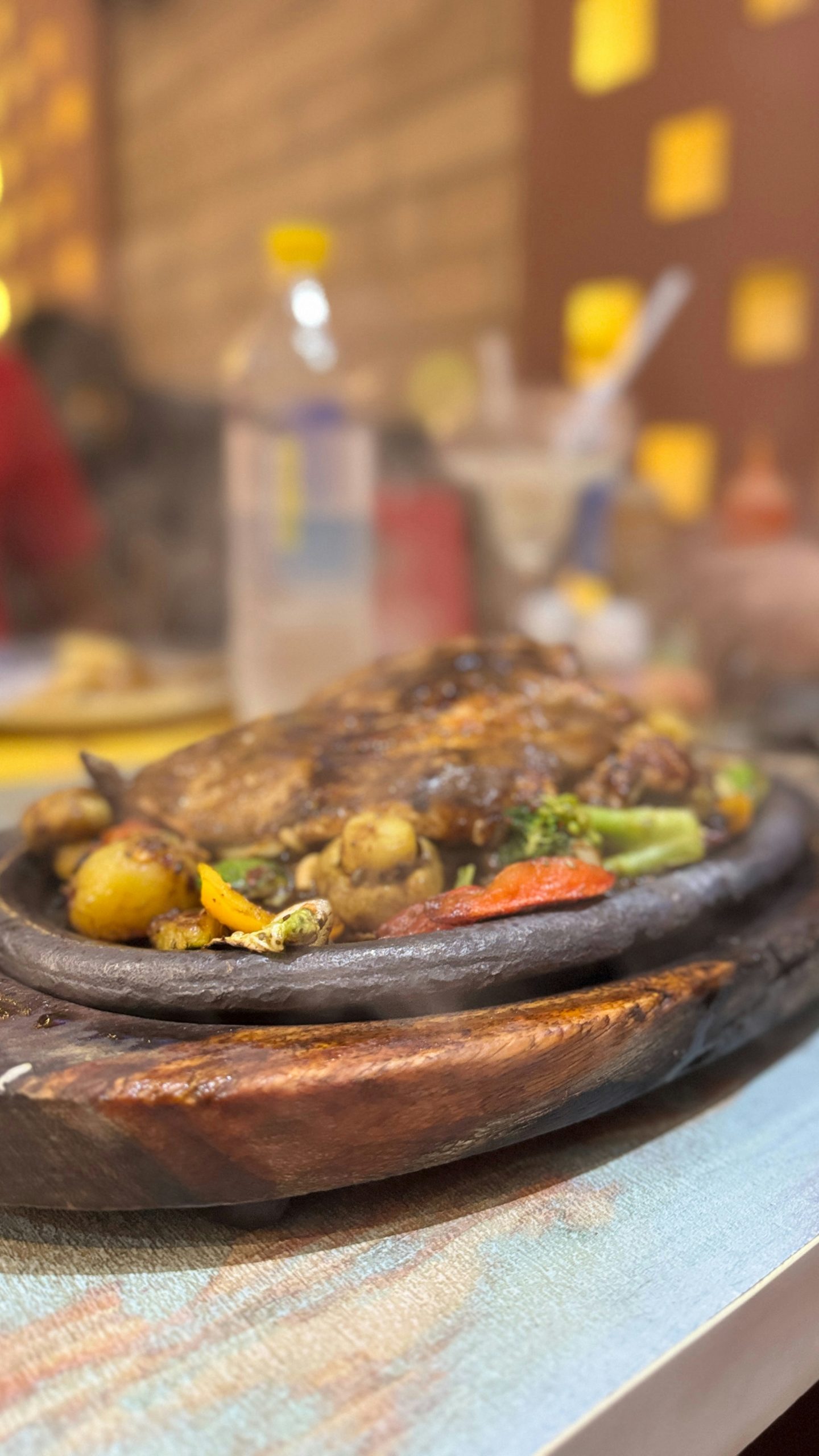About Puerto Vallarta
A city where ocean meets mountains, where tradition meets creativity, and where every street has a story. Discover the people, places, and experiences that make Puerto Vallarta one of Mexico’s most captivating coastal cities.
Everything you need to know about Puerto Vallarta, what to see, where to go, and how to experience it fully.
Puerto Vallarta is a city that lives where the Sierra Madre Occidental mountains meet the Pacific Ocean. More precisely, it sits along the Bay of Banderas, one of the largest and deepest natural bays in the world, on Mexico’s western coastline.
This region offers more than just beautiful beaches. Puerto Vallarta has a distinct personality shaped by indigenous heritage, colonial history, and a thriving arts scene. It’s a place where fishing boats share the shoreline with luxury yachts, and where sunsets are met with street performers, church bells, and the scent of fresh tortillas.
Whether you’re planning your first visit or returning to discover more, here’s everything you need to know to experience Puerto Vallarta at its best.
Where Is Puerto Vallarta?
Puerto Vallarta sits on Mexico’s central Pacific coast, in the western state of Jalisco, a region known as the birthplace of mariachi, tequila, and charro traditions. The city hugs the shoreline of the Bahía de Banderas, one of the largest and deepest bays in North America, stretching nearly 100 kilometers from Punta Mita in the north to Cabo Corrientes in the south.
This sweeping, crescent-shaped bay opens directly into the Pacific Ocean, giving Puerto Vallarta its calm, swimmable beaches and dramatic ocean sunsets. To the east, the Sierra Madre Occidental mountains rise steeply, wrapping the city in lush tropical greenery. This natural meeting of sea and jungle gives Puerto Vallarta its unique mix of vibrant wildlife, ocean breezes, and spectacular views.
Thanks to its coastal location and sheltering mountains, the city enjoys a warm, humid climate most of the year, with sunny winters and a lush, green rainy season from June through October. Whether you’re here for adventure, culture, or pure relaxation, Puerto Vallarta’s geography sets the stage for unforgettable experiences.
Why People Fall in Love with Puerto Vallarta
Puerto Vallarta’s Beaches: From Bustling Shores to Hidden Coves
Puerto Vallarta’s coastline offers some of the most diverse beach experiences in Mexico. Thanks to its location on the Bahía de Banderas, the waters are generally warm, calm, and perfect for swimming, kayaking, or snorkeling. Some beaches are lively and full of activity, while others feel completely untouched.
Playa Los Muertos is the city’s most famous beach. Located in the Romantic Zone (Zona Romántica), it’s known for its wide stretch of sand, vibrant beach clubs, parasailing, and the architectural landmark of Los Muertos Pier, which glows at night.
Conchas Chinas, just south of town, is a quieter beach area popular with locals. Its name means “Chinese Shells,” referring to the tiny, delicate shells that wash up here. Natural tide pools form in the rocks, making it a favorite for families and photographers.
Playa Palmares, a Blue Flag beach, lies about 10 minutes south of downtown and offers clean, swimmable waters without the crowds. It’s perfect for a peaceful afternoon.
For an off-the-grid experience, take a panga boat or water taxi from Los Muertos Pier to Yelapa, a traditional fishing village with no cars and a waterfall hike through the jungle. Other remote beaches include Las Ánimas, Quimixto, and Majahuitas, all reachable only by boat or hike.
Each beach has its own personality, and part of the fun of visiting Puerto Vallarta is finding your favorite stretch of sand.

Neighborhoods That Tell Their Own Stories
Puerto Vallarta is a patchwork of unique neighborhoods, each with its own flavor, rhythm, and view.
El Centro, the historic downtown, is where it all began. With narrow cobblestone streets, colonial-era buildings, and the iconic Parroquia de Nuestra Señora de Guadalupe, this neighborhood offers a deep sense of place. Street vendors, rooftop cafés, and art galleries make it both old and new at once.
Zona Romántica is one of the most charming and walkable areas in the city. Also known as the Old Town, it’s filled with boutique hotels, open-air cafés, LGBTQ+ nightlife, artisan markets, and some of the best dining in Puerto Vallarta. The mix of locals, artists, retirees, and travelers gives it a creative and inclusive energy.
Marina Vallarta, located near the airport, feels more modern and upscale. With a golf course, luxury resorts, yachts, and a peaceful marina walkway, it’s ideal for travelers who want quiet sophistication with easy access to town.
Versalles, once a sleepy residential zone, has become a foodie destination over the last few years. Here, you’ll find a growing number of local bistros, craft breweries, and chef-owned eateries offering everything from ramen to oysters to Mexican fusion.
Conchas Chinas and Amapas are hillside neighborhoods offering some of the best views in the city. These areas are quieter, filled with villas, boutique hotels, and short jungle trails that lead to hidden beaches.
Exploring Puerto Vallarta by neighborhood helps you understand how diverse the city really is. Each zone adds a layer to the experience.

Culture, Art, and Local Life
Puerto Vallarta isn’t just beautiful, it’s deeply cultural. The city has long attracted artists, writers, and filmmakers, including the legendary Elizabeth Taylor and Richard Burton, whose affair during the filming of The Night of the Iguana (1964) helped put Vallarta on the map.
Today, the city’s Art District features dozens of galleries showcasing traditional Mexican art, sculpture, indigenous Huichol beadwork, and contemporary pieces. Every Wednesday evening (October–June), the Art Walk invites locals and tourists to visit open galleries, meet the artists, enjoy a glass of wine, and immerse themselves in the creative spirit of the city.
Puerto Vallarta also celebrates its cultural roots with annual festivals like:
Día de Muertos (Day of the Dead) in early November, when altars, face painting, and candle-lit parades fill the streets.
Guadalupe Festival (December 1–12), honoring the city’s patron saint with nightly processions, traditional food, and mariachi music.
Charro Day, which celebrates Mexican cowboy culture with rodeos, horseback parades, and regional dances.
Puerto Vallarta Pride, a vibrant, inclusive celebration held each May that draws visitors from all over the world.
Local markets like the Municipal Market of Río Cuale and open-air tianguis offer everything from fresh produce to handmade jewelry and woven bags. These spots give you a window into real daily life, far from the resort experience.

Nature and Outdoor Adventures
Puerto Vallarta is one of the few places in Mexico where you can go from snorkeling in warm ocean water to hiking through tropical jungle, all in the same day. It’s a paradise for outdoor lovers and eco-conscious travelers.
Whale watching is a must if you visit between December and March. Humpback whales migrate through the Bay of Banderas each winter, and sightings of breaching whales or mother-and-calf pairs are common. Book with licensed eco-tour operators for the best experience.
Wildlife watching goes beyond the whales. You can see dolphins, manta rays, sea turtles, and exotic birds like parrots and chachalacas, especially on tours to Marietas Islands National Park or the protected Los Arcos Marine Park.
For hiking, explore the Boca de Tomatlán to Las Ánimas trail, a coastal jungle hike that passes through small beaches and ends with a rewarding swim and lunch.
If you crave adrenaline, try zip-lining, rappelling down waterfalls, or ATV tours through the Sierra Madre foothills. Many local companies also offer river rafting and paddleboarding excursions.

What to Eat in Puerto Vallarta
Puerto Vallarta is one of Mexico’s rising culinary capitals. While seafood and street tacos are everywhere (and excellent), the city offers flavors for every appetite.
Try ceviche made with local fish like mahi-mahi, marlin, or shrimp, cured in lime juice and tossed with cucumber, onion, and chili.
Birria tacos, a Jalisco specialty, come stewed in a rich broth and served with consomé on the side for dipping.
Raicilla, made from wild agave grown in the mountains near Mascota and San Sebastián del Oeste, offers a smoky, complex taste. It’s often described as tequila’s wild cousin.
For fine dining, book a table at restaurants like Café des Artistes, La Leche, or Tintoque, where chefs reinterpret traditional Mexican ingredients in creative and modern ways.
Want to eat like a local? Take a food tour, or follow your nose to a taco cart where the line is long, that’s always a good sign.

What to Eat in Puerto Vallarta
Puerto Vallarta is one of Mexico’s rising culinary capitals. While seafood and street tacos are everywhere (and excellent), the city offers flavors for every appetite.
Try ceviche made with local fish like mahi-mahi, marlin, or shrimp, cured in lime juice and tossed with cucumber, onion, and chili.
Birria tacos, a Jalisco specialty, come stewed in a rich broth and served with consomé on the side for dipping.
Raicilla, made from wild agave grown in the mountains near Mascota and San Sebastián del Oeste, offers a smoky, complex taste. It’s often described as tequila’s wild cousin.
For fine dining, book a table at restaurants like Café des Artistes, La Leche, or Tintoque, where chefs reinterpret traditional Mexican ingredients in creative and modern ways.
Want to eat like a local? Take a food tour, or follow your nose to a taco cart where the line is long, that’s always a good sign.
